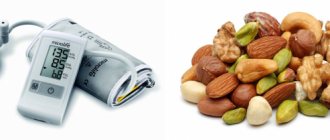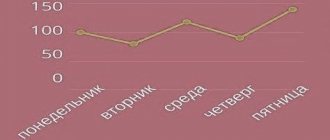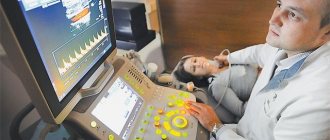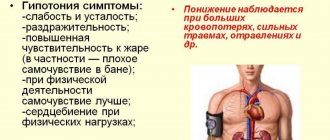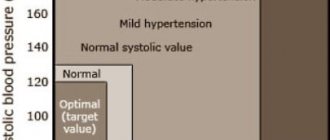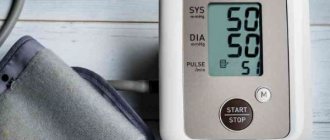Composition and properties
Pumpkin contains a complex containing vitamins and microelements, which are needed to maintain the functions of internal organs. For example:
- carotene;
- vitamin T, which affects metabolic processes, as well as A, B1, B2, B6, C, E;
- nicotinic and other acids;
- salt;
- various microelements;
- antioxidants that cleanse the body of intoxication and toxins.
Regular consumption of freshly squeezed juice or raw pulp is a preventive measure against most heart diseases, including heart attack. In addition, the use of pumpkin dishes:
- Improves digestion.
- Useful for excess weight as they are a dietary product.
- Increases acidity, reduces pain and cleanses the stomach.
- Improves vision.
- Raises hemoglobin, has a positive effect on blood clotting.
- Relieves inflammation. Used to treat skin diseases.
- Affects the dissolution of stones in urolithiasis.
- Strengthens the immune system, improves metabolic processes.
- It is used as a prophylactic agent in the treatment of tuberculosis.
- Increases testosterone levels, prevents the appearance of prostatitis.
- Lowers blood pressure in hypertension, reduces cholesterol levels.
- Used to treat diseases of the heart and blood vessels.
How does it affect blood pressure?
Dishes made from such a product perfectly tone the body.
Arterial hypertension occurs due to decreased tone of blood vessels. As a result of this process, the walls become thin and the amount of cholesterol increases, which can lead to a stroke. Regular consumption of pumpkin dishes helps:
- increase the tone of the body;
- bring bouncing pressure back to normal;
- improve blood circulation processes;
- fill the brain with oxygen;
- remove excess salt, thereby lowering blood pressure.
Pumpkin seeds also help with hypertension. Together with the pulp, due to the increased content of minerals, they prevent the walls of blood vessels from becoming rigid, strengthen them and normalize high blood pressure. Juice obtained from pumpkin:
- stops the development of atherosclerosis;
- cleanses veins and blood vessels;
- increases hemoglobin;
- stabilizes heart function;
- reduces the amount of cholesterol.
Heart pathologies and hypertension cannot be cured with pumpkin alone. This vegetable complements drug therapy and is a preventative measure.
Effect on pressure
As already mentioned, this vegetable is an indispensable aid in the treatment of cardiovascular diseases. The antioxidants contained in it clear away toxins and waste, which often cause heart failure. Consistent consumption of the juice or raw pulp prevents many heart problems, including heart attack.
Consistent consumption of juice or raw pulp prevents many heart problems
Arterial hypertension is another common vascular problem. It occurs as a result of decreased tone of blood vessels. The walls become thinner, cholesterol levels rise, and it all ends in a stroke. To prevent such a situation, you need to eat pumpkin as a preventative measure. It can be chewed as a medicine, raw, several times a day. If your stomach does not accept this option, you can boil or bake it.
Regular consumption of pumpkin dishes gradually normalizes blood pressure, which is constantly jumping. As a result, blood circulation and oxygen supply to the brain improves. To do this, it is worth preparing vegetables for the winter. It can be stored at home for a long time and does not deteriorate. It is allowed to use pumpkin seeds for blood pressure, but only in raw form. When frying, all beneficial substances are destroyed.
Thanks to its diuretic properties, pumpkin removes excess salt from the body. This helps to significantly reduce blood pressure. The main thing is not to overdo it: constant consumption of the product in large quantities can cause problems with the stomach and pancreas.
It is important to understand that it is impossible to cure heart pathologies and hypertension with pumpkin medicine. It is used for disease prevention and as an adjuvant to primary drug therapy.
Pumpkin normalizes blood pressure
Uses of pumpkin
The juice from this vegetable will help normalize blood pressure.
To reduce blood pressure, the vegetable is used raw, boiled, baked and fried, and added to porridges and soups. It is used with the addition of lemon, which is ground with pumpkin in a meat grinder. To this mixture you need to add 1 kg of sugar or honey. Use 1 tbsp. spoon before meals. The following are also useful:
- Raw pulp. If there are no stomach problems, you need to eat 20 g before eating, 1 time during the day. The amount should gradually increase to 150 g. Treatment lasts 2 months.
- Pumpkin juice. You should drink 1.5 glasses, twice a day, before meals. The concentration can be reduced by diluting with boiled water.
- Raw seeds You can consume up to 100 g per day.
In addition, pumpkin can be prepared with honey. To do this, the top of the vegetable is cut off, the contents are selected, which are mixed with 0.7-1 liters of honey. After which the mixture is returned back to the pumpkin and closed. Use up to 50 g, 2 times a day, for a long period of time. Honey medicine is useful for hypertensive patients.
The product is created by adding 50 g of wheat with raisins to 200 g of pumpkin pulp. These components are crushed and mixed with 1 tbsp. l. honey The mixture is consumed on an empty stomach for a month. A drug using dried apricots in an amount of 50 g, which is filled with pumpkin oil, is effective. The resulting medicine is infused for about a week, taken before eating, 1 tbsp. l. or added to salads.
Recipes for blood pressure
Pumpkin for high blood pressure is consumed raw, boiled, baked and even fried. It is added to porridges, soups, and mousses. Its seeds (white seeds) and natural juice are useful. You can also buy pumpkin seed oil at the pharmacy. In any form, it is equally useful and accessible.
There are many different recipes for pumpkin medicine for hypertension:
- With lemon. The pulp of 0.5 kg of raw pumpkin is crushed through a meat grinder along with 1 lemon (with skin). Add 500 g of sugar or honey to the resulting mixture and mix well. Eat 1 tablespoon before each meal. The medicine is stored in the refrigerator under the lid. Long-term use normalizes blood pressure for a long time.
- Decoction from the stem. You will need dry cuttings collected in the autumn. For the daily norm, 2-3 stems (20 g) are enough. They need to be boiled for 2-3 minutes in a glass of water. The resulting decoction, chilled, is drunk throughout the day. Thanks to its good diuretic effect, blood pressure is effectively reduced. In addition, the infusion helps relieve tissue swelling in heart and kidney diseases.
- Raw pulp. If the stomach is functioning normally, it is recommended to eat raw fruit. You need to start with 20 g of pulp once before eating. Gradually the volume increases to 150 g three times a day. The treatment course lasts up to 2 months. In addition to hypertension, raw pulp saves from heart problems, arrhythmia, atherosclerosis, and bronchitis.
If your stomach is functioning normally, it is recommended to eat raw pumpkin.
- Pumpkin juice. Pumpkin juice for blood pressure is more popular because it is easier to take. Freshly squeezed juice is drunk half a glass 2 times a day before meals. The concentration can be reduced by diluting it by half with boiled water.
- Seeds. The seeds are loved by many adults and children, but few people know that they are very useful. You can eat up to 100 g of raw (not roasted) pumpkin seeds per day and your blood pressure will stop bothering you.
- With honey. Chronic hypertensive patients need to prepare the medicine in advance. To do this, take a whole, small-sized fruit. The top is cut off and the inner contents are scooped out with a spoon. It is mixed with 0.7–1 liters of honey, poured back in, and covered. Infuse in a dark and cool place for 14 days. Take 50 g twice a day for a long time.
- With raisins and wheat. Ingredients of the healing mixture: 200 g of pulp, 50 g of raisins and sprouted wheat, 1 tbsp. l. honey All components are crushed, honey is added. The resulting mixture is consumed on an empty stomach for a month.
- With dried apricots. Approximately 50 g of dried apricots need to be poured with 200 g of pumpkin oil. Leave in a closed container for a week. The mixture can be taken before meals, one tablespoon at a time, or used as a salad dressing. The product prevents arrhythmia, the formation of blood clots, and strengthens the walls of blood vessels.
Pressure pumpkin has always been used in various variations. Despite the abundance of medications, this remedy has not lost its relevance.
Precautionary measures
The seeds are not recommended for people who are prone to weight gain.
Constant, large quantities of pumpkin seeds and pumpkin juice under pressure can lead to gastric problems and cause other harm to health, especially with chronic diseases. You should remember the precautions and take precautions. Pumpkin seeds should not be consumed regularly, as the high acid content can damage tooth enamel. If you have problems with excess weight, you should opt for pulp. The seeds are high in calories.
Contraindications for consuming pumpkin include bloating and stomach cramps. Therefore, after eating a raw vegetable, you should not drink cold liquid. Pumpkin is not recommended for use in diabetes mellitus. Juice and raw vegetables are contraindicated in patients with intestinal problems, as well as those who do not accept the vegetable. There are few contraindications and rules for using the vegetable. Pumpkin contains a vitamin and mineral complex that is necessary to maintain normal functioning of the body. It should be in every person's diet. And for hypertension it is indispensable.
How can pumpkin be harmful and who should not eat it?
The main autumn vegetable is pumpkin. It is often recommended to include it in your autumn-winter diet, cook soups from it, bake it, or add it to porridge. And rightly so, because pumpkin is a very healthy product. But like any product that has good properties that we need, pumpkin can also cause harm if consumed too much or unwisely. Can pumpkin be harmful and to whom is it contraindicated?
Mikhail Kutushov, toxicologist, Doctor of Medical Sciences answers :
Pumpkin is a healthy product. This is an axiom. But there are times when it can disrupt the functioning of the gastrointestinal tract. For example, eating raw pumpkin in salads is contraindicated for people with inflammatory diseases of the gastrointestinal tract.
Those who have gallstones or kidney stones should also treat pumpkin with caution, since a large amount of raw pumpkin increases the risk of exacerbation of cholelithiasis and can simply provoke the movement of stones, which is very dangerous.
Pumpkin has a sweetish flesh, however, eating too much pumpkin can lower your blood sugar to dangerously low levels, which can lead to “hypoglycemia.”
Hypotension, that is, low blood pressure, and pregnancy are considered contraindications for the constant use of pumpkin.
Pumpkin and sea buckthorn. Orange sweet dishes for late autumn Read more
Once again I want to emphasize that pumpkin is an extremely healthy vegetable. It has a low calorie content, only 22 kcal per 100 grams in raw form, so it is suitable for those who are watching their weight or intend to lose weight. Pumpkin contains dietary fiber, pectin, organic acids, ash, a lot of water, and Omega fatty acids. Pumpkin is rich in fiber and vitamins A and C, therefore, along with turnips, it is useful for feeding friendly bacteria in the intestinal microbiota. As a result, it improves its functioning and digestion. The orange pulp of pumpkin contains a lot of vitamin PP, retinol, ascorbic acid, pyridoxine, folic acid, riboflavin, vitamin B5, thiamine, and tocopherol. There is also vitamin K and beta-carotene. The mineral composition of pumpkin pulp is very important. There are, for example, phosphorus, fluorine, potassium, chlorine, calcium, iron, magnesium, iodine and sodium.
Pumpkin seeds contain a lot of essential oils, and their contents boast such rare substances as phytin and carnitine (rare vitamin T). By the way, the seeds are quite high in calories, so I would not recommend eating them fried if you intend to lose weight.
Attention! Self-medication is unacceptable! For any health problems, you should contact a specialist.
